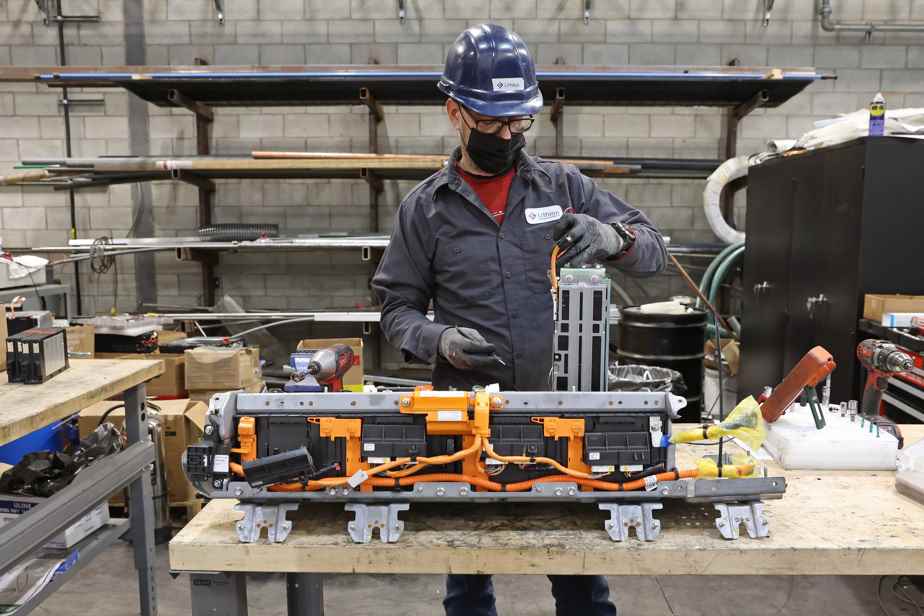Federal Innovation Minister Francois-Philippe Champagne is once again touting Canada’s battery supply chain prowess in Asia this week, but this time he has a new boast in his back pocket.
Research firm BloombergNEF propelled Canada’s position in its annual global ranking of battery-producing countries ahead of everyone but China.
“It’s something I’m going to use a lot on my trip to Asia, to say we have what Asia needs,” Champagne said.
The survey ranks 30 countries with a significant presence in the industry, whether in the extraction of raw materials or the production of batteries and their components.
The first version in 2020 ranked Canada fourth and in 2021 fifth, after falling mining production and rising regulatory hurdles.
But Canada has announced investments of more than $15 billion over the past 10 months in areas ranging from mining and processing critical minerals to manufacturing battery components to producing electric vehicles and the country’s first gigafactory.
This helped Canada overtake Sweden, Germany and the United States, even with the latter’s massive investments under the Inflation Reduction Act.

PHOTO CATHERINE LEFEBVRE, ARCHIVES SPECIAL COLLABORATION
Francois-Philippe Champagne
“I think it’s a home run for Canada in the sense that the vision was really to build an ecosystem from mining to recycling, and now it’s taking shape and what we’re doing now is ‘optimise,’ maintained Minister Champagne.
A commercial tour in Asia
His trips this week to Japan and South Korea, as well as the stops planned for next week in Germany, go in this direction. He has already met several times with key industry players in these countries, both in Canada and abroad, but he says he is focused on cementing these relationships and continues to promote the presence of the Canada on the ground.
The battery supply chain has many links, starting with the extraction of raw materials such as lithium, nickel, aluminum and copper used to manufacture batteries.
These minerals and metals are then refined so that they can be used to make battery components, namely cathodes, anodes and electrolytes.
The components are then assembled to make battery cells – which look like the same non-rechargeable alkaline batteries that most consumers are familiar with – and then giga-factories take care of packaging those cells in large numbers to make battery packs. that power everything from laptops to cell phones to electric cars.
BloombergNEF’s report examines all of these elements of the supply chain, as well as end-product demand and environmental management.
Canada scores one of the highest marks for keeping the supply chain green, thanks in part to a generous supply of renewable energy, but also environmental regulations on mining.
The BloombergNEF survey also credited Canada for its efforts to boost mining activity.
Canada still lags behind in battery cell and component manufacturing and local demand for electric vehicles, but there have been many announcements over the past year improving both.
Prevent China from dominating the industry
Following a trip to meet industry players in Germany last month, Ontario Economic Development Minister Vic Fedeli told The Canadian Press that one of the main selling points of the Canada is its access to the raw materials needed to manufacture batteries.
“They talk about our critical minerals and that’s when we know we have their real interest, because there are a limited number of active producers of critical minerals outside of China,” he said. Explain.
Although Canada is not the largest producer of any of the major metals and minerals needed for batteries, it is one of the few places in the world capable of producing them all.
Canada and its allies are also trying to prevent China from using its dominance in the battery supply chain industry to influence global politics. They compared this situation to that of Europe which is too dependent on Russia for its gas supply.
Having started investing in the field over a decade ago, China is now home to three quarters of all battery cell manufacturing capacity and 90% of anode and electrolyte production.
Its production of raw minerals is still not the highest, but it has invested heavily in mines in other countries, including Canada, to bring these products to China for refining and use in manufacturing.
The US Geological Survey said China produced around 4% of the world’s nickel last year, but refined more than two-thirds.
It extracted about 14% of the lithium produced in 2021, but refined 59%.
Canada is beginning to take steps to limit China’s influence in the domestic supply chain. Earlier this month, Champagne said Canada would limit the involvement of foreign state-owned companies in the critical minerals sector and a week later ordered three Chinese companies to sell their stakes in smaller companies Canadian.
But there are many others, including the only lithium mine currently in operation in Canada. The Tanco mine in Manitoba belongs to the Chinese company Sinomine Resource Group.
Minister Champagne did not say what other directives would come, but hinted at additional announcements.
“I will be like a hawk scrutinizing these transactions to ensure that we are protecting the national and economic security of Canadians,” he said.
